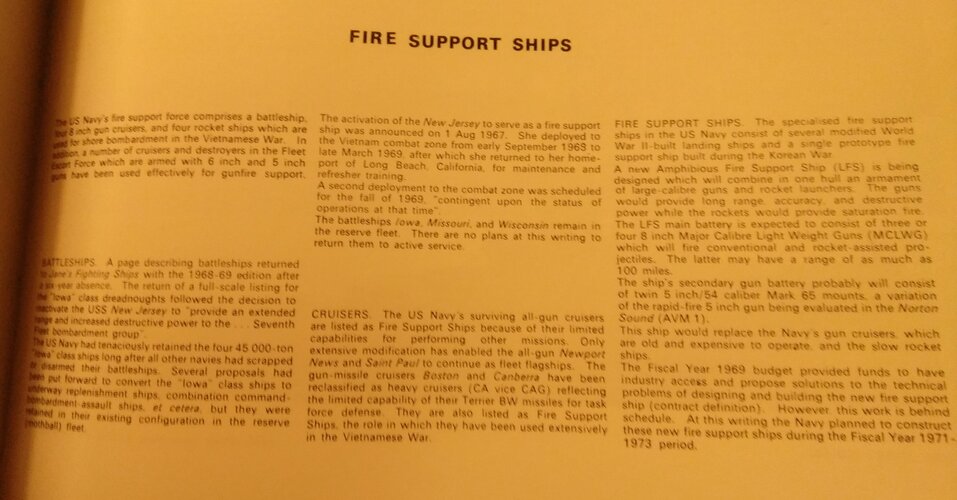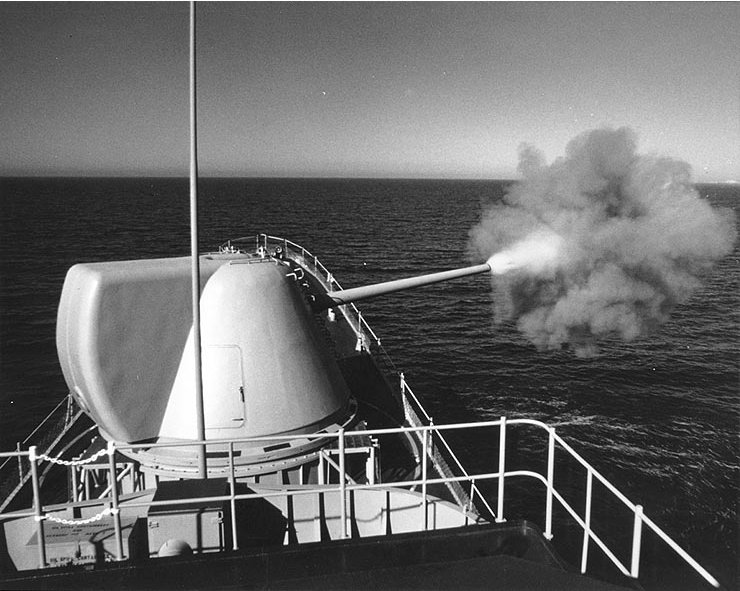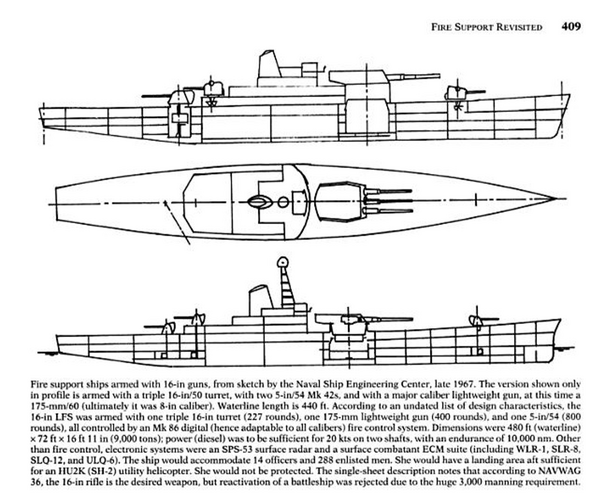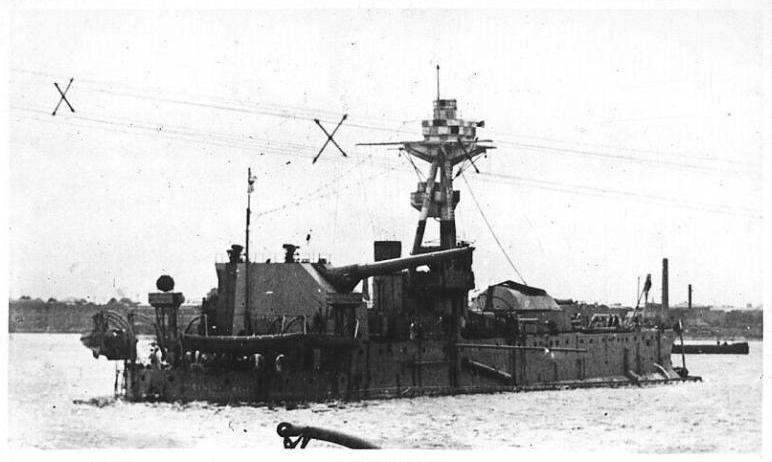- Joined
- 1 February 2011
- Messages
- 2,933
- Reaction score
- 3,611
In Norman Friedman's US Amphibious Ships and Craft: An Illustrated Design History book (2002) mentions some interesting weapon systems:
The wikipedia article mentions a 155mm/70 "Combustion Light Gas Gun" but no mention of the 127mm gun. The 5"/84 Pulsed-Powered and 8"/60 conventional guns are also new to me!
Friedman also mentions fire support combat systems for an Iowa, the LPD-4 USS Austin, a Spruance and a Knox class vessel.
Did anybody hear about these weapon systems which seems not past through the earliest development stages? 5"/84 and the 8"/60 is quite interesting!
In February 1983 the commandant of the Marine Corps asked the Defense Science Board to study the fire support issue.
...
The study was finally submitted on 4 April 1985 as the "Naval Surface Fire Support (NSFS) Improvement Study", and it was pointedly different from a study of Naval GUN fire support.
...
The future weapons considered by the study were a bomblet-carrying missile; an 8"/60 gun, lengthened to improve range compared to the earlier 8"/55, firing conventional, rocket assisted and extended-range (ramjet) ammunition; and the army missile system. Due to its long time to flight, the rocket-assisted projectile (RAP) round required a terminal seeker. A faster ramjet (with 70km range using solid fuel), then under navy development, did not contain a seeker. There was also interest in an anti-radar shell for the 8" gun. The gun might be an upgraded version of the earlier Mk 71 or a vertical loader.
...
The 8"/60 was assessed as the least expensive improvement but also the most marginal.
...
Several more exotic weapons were under development, including 5" and 155mm rail guns (electric guns) and a pulsed-power 5"/84 (hybrid solid-propellant gun). They did not figure significantly in the NSFS study, however.
The wikipedia article mentions a 155mm/70 "Combustion Light Gas Gun" but no mention of the 127mm gun. The 5"/84 Pulsed-Powered and 8"/60 conventional guns are also new to me!
Friedman also mentions fire support combat systems for an Iowa, the LPD-4 USS Austin, a Spruance and a Knox class vessel.
Did anybody hear about these weapon systems which seems not past through the earliest development stages? 5"/84 and the 8"/60 is quite interesting!




